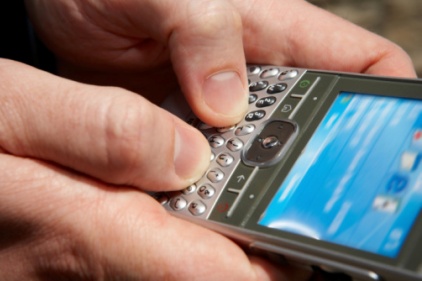Texting while doctoring: a patient safety hazard
Physician texting while doctoring could be hazardous, according to an ideas and opinions piece published in the Dec. 3 issue of the Annals of Internal Medicine.

The authors note that, while multitasking, physicians can miss the signals of depression, disagreement, and lack of understanding that patients send. Computerized physician order entry increases time commitment and cognitive interruptions, and is a form of waste that reduces primary care capacity. A technologically supported, team-based model of care might be appropriate, which allows the physician to give patients undivided attention while other team members perform clerical and routine clinical functions such as order entry and visit note documentation.
Practices using innovative models report improved patient access, better staff and physician satisfaction, and higher-quality metrics. These models require new technologies and policies such as a team login and team signatures. New payment models could also assist; for example, a global payment model where clinical revenue does not necessitate recording the encounter in a visit-based level-of-service framework.
"Reducing texting while doctoring will decrease the hazards of distracted physicians making perceptual and cognitive errors during the medical encounter," the authors write.
The researchers point out that texting while driving is illegal in most states and increases the risk of crashing by a factor of 23. They note that multitasking (doing multiple tasks at once) undermines observation, communication, problem solving, and the development of trust between physicians and patients. They point to a study from 2012 that found completion of electronic medical records during patient care by physicians led to a 25 percent greater chance that depressed patients would not receive depression treatment.
It appeared that the excess bedside record keeping inhibited a physician’s ability to recognize clues to a patient’s mental state. Other studies have found that electronic medical records took up 44 percent of an emergency physician’s time such that they only spent less than a third of their time caring for patients.
The current visit-based, fee for service model makes physicians spend an inordinate amount of time filling out medical records for billing purposes, checking boxes to justify care, while limiting the amount of attention given to patients. They point out that a tsunami is approaching in the U.S .health care system with an obese, aging population and massive changes in insurance status and the delivery of healthcare.In the piece the authors comment on the distractions caused by the technology, leading to doctors missing important cues in the exam room and to and impaired problem-solving. This is part of a larger phenomenon that has been called "skill-degrading" or "de-skilling", e.g., see April 16, 2010 post "Health Information Technology Basics From Calif. Nurses Association and National Nurses Organizing Committee" at http://hcrenewal.blogspot.com/2010/04/health-information-technology-basics.html).
These effects are likely to be further worsened as more and more clerical tasks such as order entry, the authors point out, get shifted to medical professionals. Computerized order entry is often a complex and convoluted process; the CPOE systems are most decidedly NOT mere "typewriters for orders." See, for instance, "Mission-hostile health IT" at http://hcrenewal.blogspot.com/2009/02/it-makes-healthcare-easier-is-this.html.
Most of the Annals article is available as a free preview at http://annals.org/article.aspx?articleid=1784295.
Looking for a reprint of this article?
From high-res PDFs to custom plaques, order your copy today!






